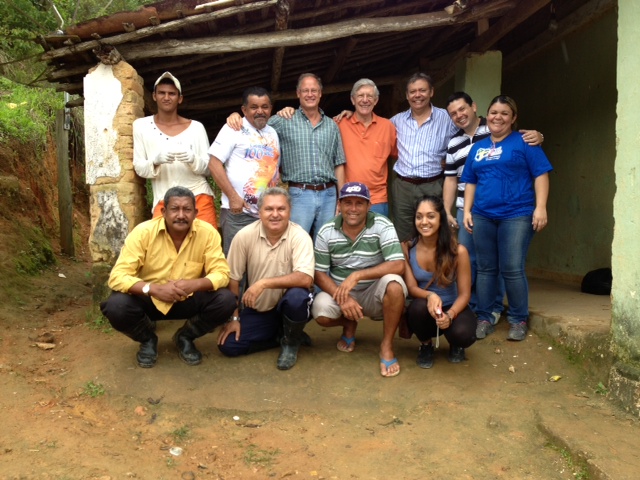Leishmaniasis
Current projects:
Synthetic sex-aggregation pheromone
We are conducting cluster randomised field trials in Brazil of a synthetic version of the sex-aggregation pheromone produced by the male of the sand fly vector of visceral leishmaniasis in the Americas. The synthetic pheromone attracts conspecific blood-seeking females to the slow-release dispenser source. When co-located with pyrethroid insecticides, we have shown that this novel “lure-and-kill” approach reduces parasite infection incidence and clinical Leishmania parasite loads in the canine reservoir by 53% and lowers the household female sand fly abundance by 49%-59% to 70% by cross-sectional and longitudinal sentinel study respectively. Moreover, the intervention was half as effective in nearby untreated houses compared to in treated houses, indicative of the spatial attraction of the synthetic pheromone. Our mathematical models predict that the synthetic pheromone can attract about 50% of host-seeking female Lu. longipalpis away from competing hosts such as humans, dogs and chickens.
Insecticide-impregnated dog collars
Cluster randomised trials of insecticide-impregnated collars fitted to the canine reservoir of visceral leishmaniasis in Brazil and Iran have shown that when deployed as a public health community-wide intervention, dog collars can reduce infection incidence of clinical visceral leishmaniasis in children (the high-risk group) by 50%. Collars also reduces clinical parasite loads in the canine reservoir by 23%-48% and household vector abundance by 43%.
Combatting exophilic disease vectors
Many disease vectors prefer to blood-feed outdoors thus evading standard indoor residual spraying (IRS) and insecticide-treated bednets (ITNs). Our pilot studies in East Africa demonstrate that one-off outdoor residual spraying of pyrethroid insecticide reduces sand fly vector abundance by 60%-99% over the entire season, depending on the trapping method and location.
Identification of animal reservoirs of disease pathogens
Longitudinal mark-recapture studies to identify the comparative roles of wild and synanthropic rodents in the transmission cycle(s) of Leishmania brasiliensis in northeast Brazil to identify habitat affiliations, densities, infection status and infectiousness to sand fly vectors, reveal that there is a guild of effective reservoirs, the species composition of which is strongly influenced by the creation of cash crop plantations near to houses.

Funders: Brazilian government (CNPq- Science Without Borders program)
Collaborators: S. Brandao-Fiho Fiocruz-CPqAM, R. Brasil Fiocruz-RG
